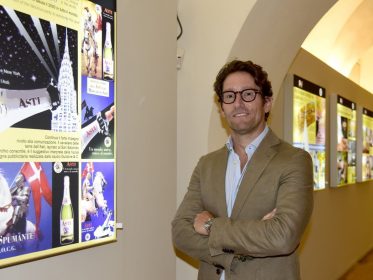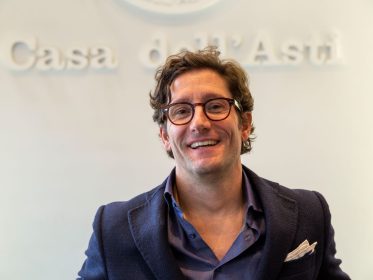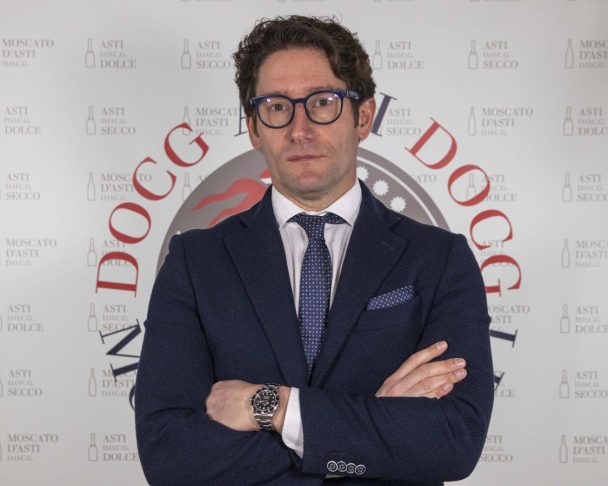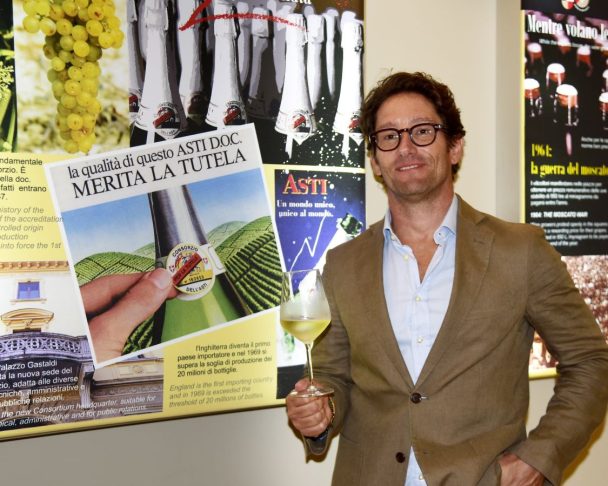Giacomo Pondini: “I believe that the role of Consortiums soon will focus increasingly more on tourism issues. With that in mind, we should build up a net that goes beyond our wineries”
How the one of the most famous DOCGs of Piedmont Consorzio dell’Asti is functioning, what are the new vectors and marketing strategies and in the framework of the Wine Travel Awards project as well, what are the sustainable development initiatives among Asti winemakers, Asti wines and new markets we discussed with the consortium general director Mr. Giacomo Pondini.
Consorzio dell’Asti patronizes one of the most famous DOCGs of Piedmont. Please tell us what territories, terroirs and how many estates it covers today?
The area of production of Asti DOCG covers 51 municipalities in the Alessandria, Asti, Cuneo provinces: ten thousand hectares of Moscato bianco in the heart of one the most important Italian regions in terms of quality wines, Piedmont. A UNESCO site since 2014, the territory is usually characterized by hilly landscapes covered in vineyards, sometimes placed on steep slopes, that can only be worked by hand. Great variety of terroirs, with soils that may vary from light weight mineral and sandy, more permeable in western side, to the silt-richer, solid of the easter, halfway between the Cottian Alps and the Ligurian Sea.
Mr. Giacomo, as we know, you have an education as an international political scientist and extensive work experience in the wine world, in particular, in Chianti and the Brunello di Montalcino consortium. How does all this affect the work at Consorzio dell’Asti e del Moscato d’Asti DOCG? What exactly did you change, what new vectors did you discover?
I don’t think you have to change or invent anything. It’s all there. Asti and Moscato d’Asti, as sparkling / fizzy wines, are versatile. That can really be a bonus, in terms of creating different lines of communication. And the history of this wine, make things even more interesting: a fore father of Asti Sparkling was created by Carlo Gancia in the 19th century based on Moscato grapes with the Traditional Method; in 1898 Federico Martinotti, Director of the oenological school in Asti, created the “tank fermentation” method, in order to improve the vinification process, and a the same time creating the circumstances for a new style of wine, less bubbly: the Moscato d’Asti. Asti Docg is at the heart of the sparkling wines story.
Since June 2014, the wine landscape of Langhe, Roero and Monferrato, consisting of 5 wine-growing areas, including Canelli and “Asti Spumante”, has been recognized as a UNESCO World Heritage Site. The recognition concerns not only the picturesque hills covered with vineyards and wineries, castles and centuries-old cellars, but also the role that Moscato bianco and Asti winemakers had and have in the development of the economy and the preservation of territories. How does the Consorzio dell’Asti work towards this program? We understand that the consortium’s participation in the international Wine Travel Awards for the second year in a row is an action in this direction. And what other events or programs for the promotion of these glorious territories and wineries on the world market are in your plans?
As a Consortium, we are concentrating on various projects of “place branding”. One consists of “explaining” the landscape through artistic installations, placed along the streets and roundabouts of the area of production for Asti, that recall the tradition for vine growing, clarifying the role of Moscato grapes in the local community.
Judging by the composition of the Wine Travel Awards nominees from Asti (by the way, some of them, including the consortium itself, became winners of the public voting), we observe that not only wineries, but also attractions such as TrEno LMR serve as tourist sightseeing activity, historical Casa Martini & Rossi, Canelli and the Underground Cathedrals, Moscato Wine Route, etc. How does the consortium communicate with similar objects, maybe some unique collaborations are formed? Tell us about such an experience if you have one.
I believe that the role of Consortiums soon will focus increasingly more on tourism issues. With that in mind, we should build up a net that goes beyond our wineries, involving all the assets that can help growing a community, such as its historical and cultural heritage.
Asti wines, thanks to their quality, lightness and possibilities of consumption – from aperitifs to cocktails – are becoming more and more popular. In addition, Consorzio dell’Asti has low-alcohol wines in its portfolio of winemakers. Please comment on this popular trend. Marketing research may have been conducted, please share your observations.
All over the world there’s an increasing interest for low alcohol wines. Asti Sparkling Dolce and Moscato d’Asti have always been naturally low in alcohol, as naturally sweet. Together with the aromatic profile, all these characteristics make our wine unique in the global scenario of GI/DOCG wines.
Did the consortium introduce any measures to encourage winemakers to produce low-alcohol wines?
The Consortium can support its wineries – by law – only in the promotion and protection of the ASTI DOCG wines.
It would also be interesting to learn about sustainable development initiatives among Asti winemakers. How are models of established farms being implemented in your territories, and what support do you provide for those who apply them in themselves?
Sustainable development has always been a key factor for many producers. In fact, the first BIO wine in Italy was a Moscato d’Asti, back in 1992.
We are now experimenting with a group of wineries a sustainability protocol that we’re planning to extend to the whole area, in order to obtain, in a few years’ time, the sustainability certification for the entire Appellation.
If we talk about the export of wines, which countries’ markets are your priorities at the moment, who are the leaders in the consumption of your wines? Judging by the general statistics, Italy leads even in such developed wine-growing countries as France. Which European countries are in your area of interest?
The United States is the first market in the world for Moscato d’Asti, while Asti Sparkling has its main export end in the eastern European countries.
We noted that the Consorzio dell’Asti has a rather unusual approach to the selection of its ambassadors. If most wine associations rely on sommeliers, the ranks of Asti’s ambassadors include bartenders, chefs, culinary schools, and the Accademia Maestri Pasticceri Italiani. And even among the ambassadors of Asti is the young tennis star Sonny (Lorenzo Sonego). Is this a particular strategy of the Consorzio dell’Asti? Who is its author? Do you attract guides or representatives of other professions to the clan of ambassadors?
Asti is a popular Docg in Italy, and to explain the versatility of these wines, we needed different characters. That’s how you can explain the food pairing (the famous Italian chef Alessandro Borghese), aperitif and mixology with the flair bartender Giorgio Facchinetti, top dessert with AMPI, and any celebration moment, through the tennis star Sonego. There’s always a reason for Asti.
We see that the Consorzio dell’Asti also supports a large number of initiatives – it is the official sparkling final of the Nitto ATP tennis tournament and celebrated its 90th anniversary with an exhibition called “Novant’anni di bollicine”. What other creative marketing programs do you have in the works?
One of the next big goals is going to be developing a complex where to enhance the awareness of the appellation, making the exhibition permanent, where wine lovers will be able to understand and enjoy the unique history of Asti and its wines.
Please announce in more detail the leading events – in fact, their number and variety is amazing – from official meetings and forums, to festivals, cocktail parties and gastronomic outings.
That would take a few pages. I would like to mention that only for the “local” promotion, there are 51 municipalities within the area of production of Asti DOCG, and nearly each of them every year has a specific event supported by the Consortium. Then add events such as Vinitaly, Prowein, London Wine fair, Guided Tasting in the US and other countries, Milano Wine Week, Collissioni Festival, Atp Tennis tournament … and many more.
What new projects and concepts are you developing (perhaps together with regional promotion organizations) for the development and promotion of wine tourism in the coming years?
I believe the key should be promoting Piedmont as a whole, through the concept of Langhe-Roero and Monferrato, that can immediately bring people to a perception of excellent quality wines and food, in an outstanding landscape.
If you single out only three leading missions of the consortium you lead today, which would you name first?
Increase the awareness of Asti Docg Wines and its territory, while giving stability to the production, in sustainable ways.




